Over the years, the LINE Dictionary has become our favourite online Chinese-English dictionary.
What’s more, it’s free…
Our story…
I learnt English and Chinese as first languages in Singapore. Now, my children are studying in a Malaysian Chinese school (SJKC), where the standard of Chinese is way higher. They also learn Mathematics and Science in Chinese, from 6+ years old.
Ten years ago, I was apprehensive about being able to manage this. Then thanks to new technology and resources, my children and I are progressing well in learning Chinese.
I even managed to homeschool the younger two through kindergarten before sending them to the deep end of Chinese primary school!
Stroke Order: In recent years, the stroke order of some radicals and words such as 火,忄and 里 have been updated and standardised.
Therefore, in the beginning, we need a credible source before showing the child how to write a new character.
Pronunciation: Even though I was drilled in pronunciation in Chinese Speech and Drama for 4 years when young, I’ve been mispronouncing quite a number of words.
Especially 多音字 (duōyīnzì, one character with multiple pronunciations) and 变调 (biàndiào, change of tone in different phrases).
For example, “一” can be pronounced as yī, yí, yì or yi, depending on the usage.
Mispronunciations are hard to change when older, so I try my best to teach my children correct pronunciations from young.
This post shall share how to use LINE Dictionary to help your child in her reading, writing and pronunciation.
Why LINE?
These are the reasons why we like LINE Dictionary:
- Ability to check up an unfamiliar word by using the writing pad: This is much faster than using a hardcopy dictionary by searching radicals (部首 bùshǒu) and stroke count (笔画 bǐhuà).
- Simple definitions in English that are suitable for children and new learners
- Read-aloud and accurate pronunciation available
- Usage examples with read-aloud pronunciation
- Shows stroke order
- Available online: I prefer a website over an app to reduce the memory space taken up on our gadgets
- It’s free
Step-by-Step Tutorial
1. Go to LINE Dictionary website here
2. Copy and paste the character or short phrase (usually 2 to 4 words) you wish to check into the search bar.
This does not translate sentences.
3. Alternatively, click the Search icon
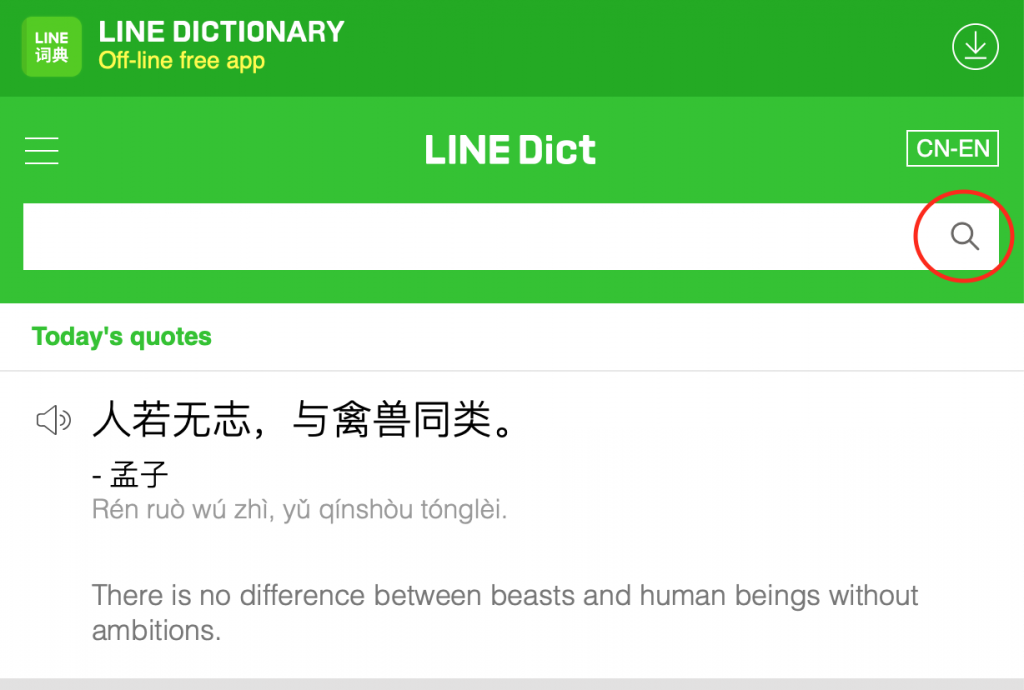
4. And click the Paintbrush icon to write the word. This is useful for new words in a book that we can neither pronounce, nor copy and paste.
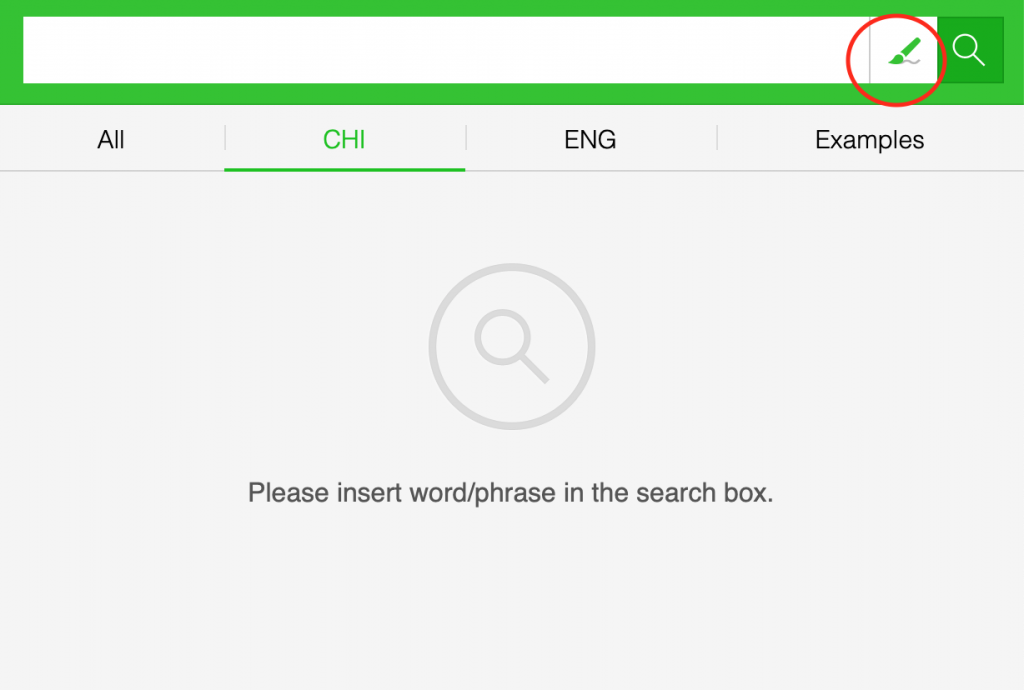
5. Write the word and choose the one that looks the same. This works on a touchscreen handphone/tablet or computer keypad.
Definitely easier on a touchscreen.
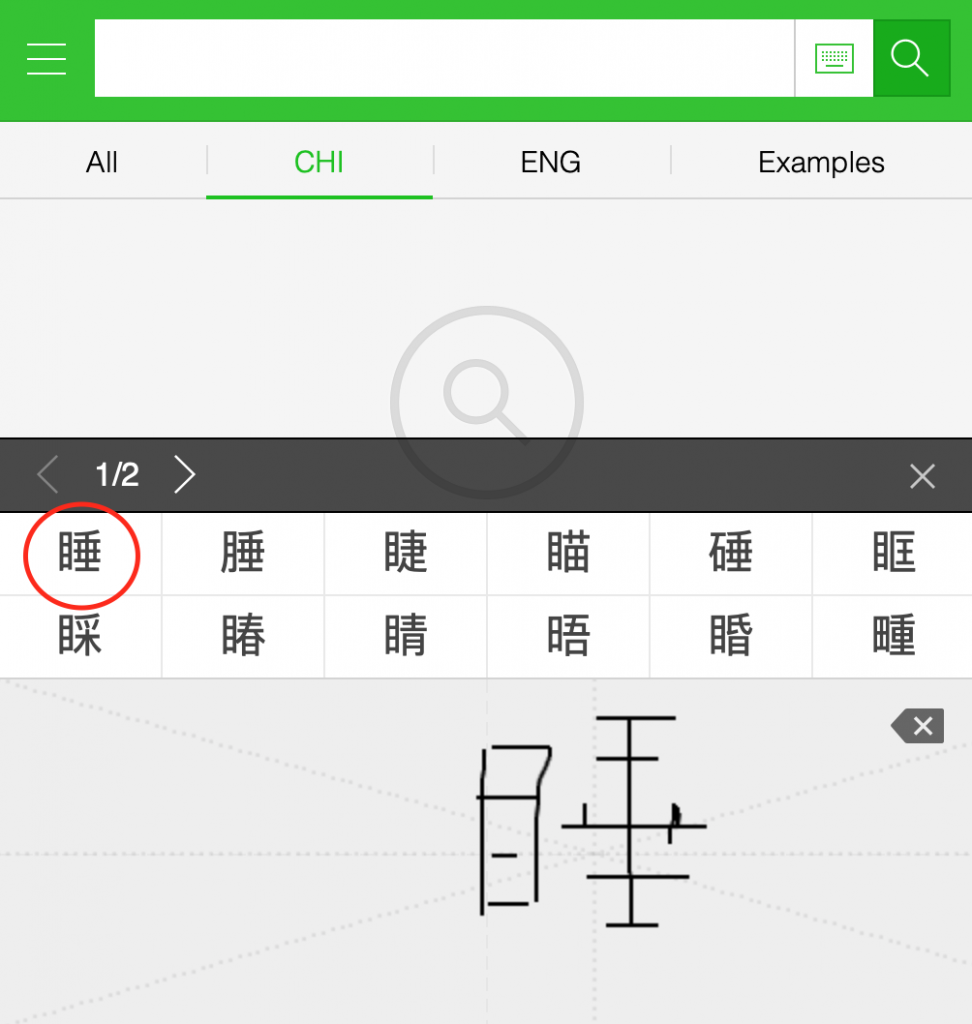
6. At the page for the word, click the Loudspeaker icon to listen to the pronunciation.
Refer to the Hanyu Pinyin under the word.
7. Click on the the Play button for strokes to see the correct stroke order.
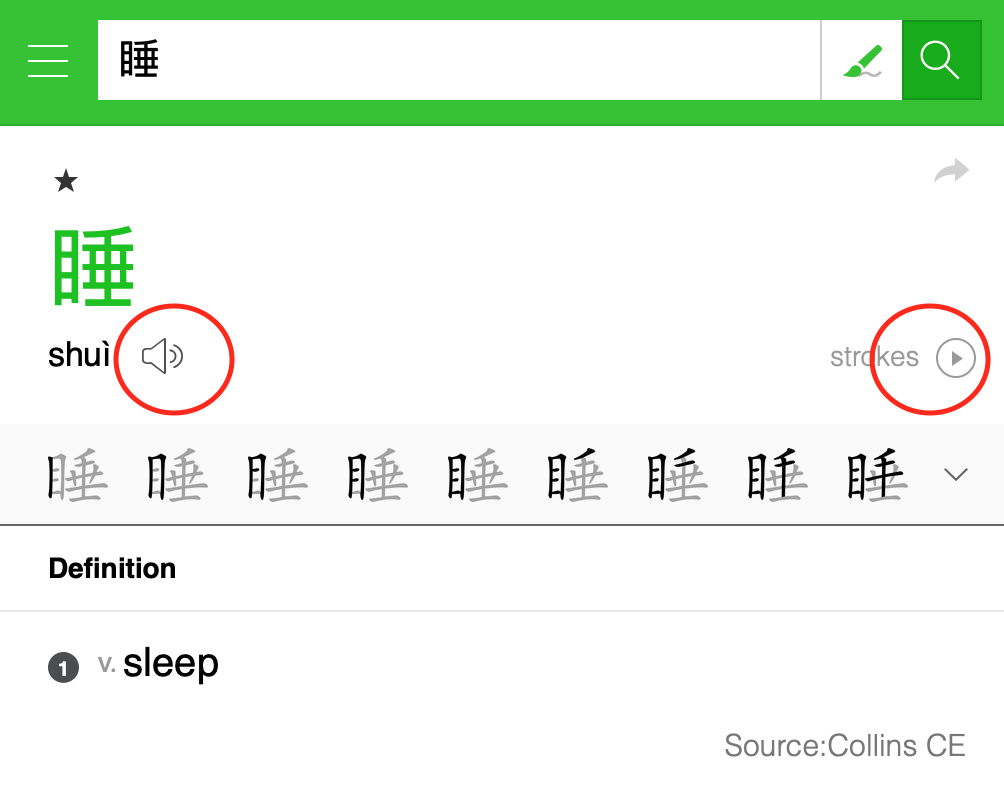
8. Check the correct stroke order. I like that the words are shown in Kaiti font.
It will loop over and over, so my child will watch and practise writing with his fingers in the air or on a table until he masters it.
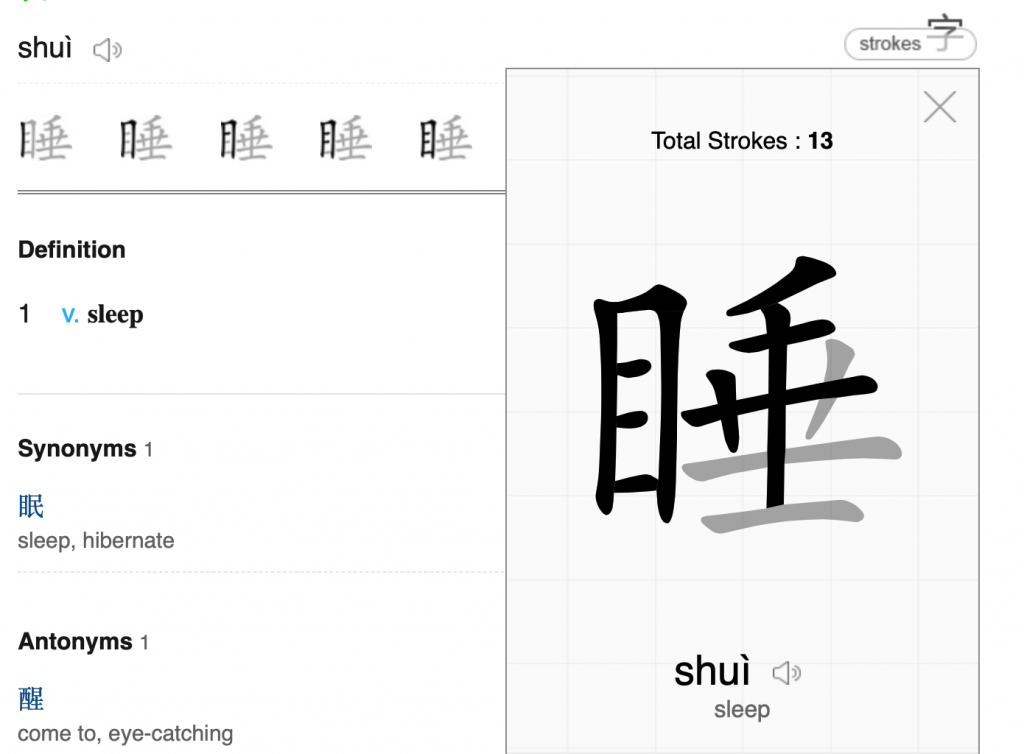
9. For more usage examples, look further below. Click on the smaller Loudspeaker icon to listen to the read-aloud for the phrase or sentence.
The pronunciation is recorded by a native speaker with correct 变调 (biàndiào, change of tone).
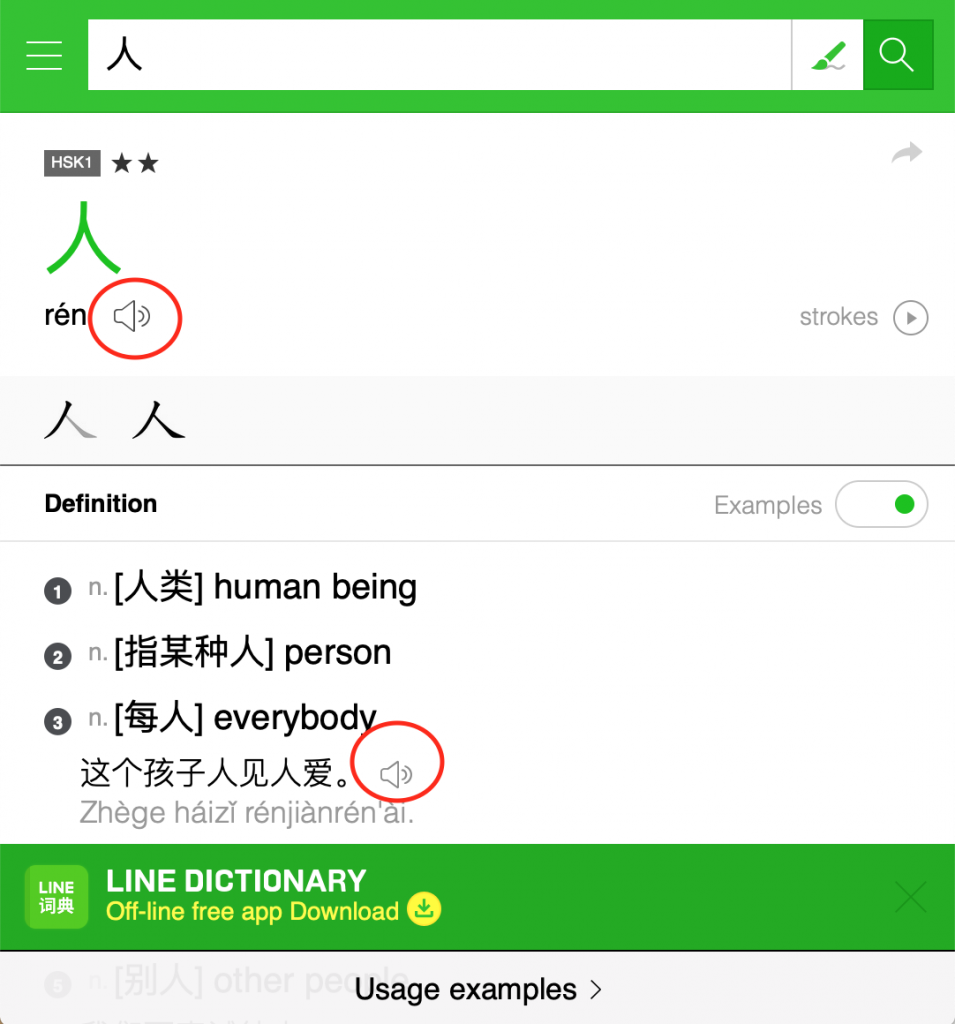
That’s it! We’ve been able to learn many Chinese words by using LINE Dictionary, and my eldest boy is able to use it himself.
I’ve even used to it translate my Home Practice Workshop to deliver it in Chinese!
FAQs
Q: What are the limitations of LINE Dictionary?
There are some technical phrases or complex words that we were unable to find in LINE Dictionary.
To work around it, I will fall back on the free ZDIC here. ZDIC does not have a writing pad, so I’ll copy the word written in LINE Dictionary and paste it in ZDIC.
Also, it is only in Simplified Chinese. If you need Traditional Chinese too, then you may use ZDIC or Pleco (see below).
Q: How about Pleco app?
Pleco is a very popular Chinese dictionary app. I’ve tried it years ago and preferred LINE Dictionary. I just downloaded it to try it out again and found these:
- Traditional Chinese: It includes both Simplified and Traditional Chinese
- Pronunciation: The pronunciation often does not account for 变调 (biàndiào, change of tone), which makes it unsuitable for our usage. For example, 一 (yī) has various 变调 (biàndiào). The examples in Pleco seem to be recorded and pieced together instead of recorded as a complete phrase or sentence. This means that you or your child may learn some inaccurate pronunciation from Pleco.
- Stroke Order: This is free only for the first 500 basic words. To get Stroke Order for more advanced words, you need to buy an add-on. As a reference, my 8-year old child already learns more than 1000 words, so the free version would be insufficient.
Let me know if you have more questions so that I can add on to the FAQs.
(Feature image: Pexels)
Hop on to our other Chinese learning materials:
- How to Teach Chinese Reading
- Flashcards & Home Practice Materials
- Montessori Printables
- Chinese Learning Activities
Join our mailing list below to receive more teaching tips and printables!


Great news. Thanks for the information.
Hi Carol!
Just want to say “Thanks!” for your reference and advice ! Been looking for alternative to Pleco .
Take care & stay safe!